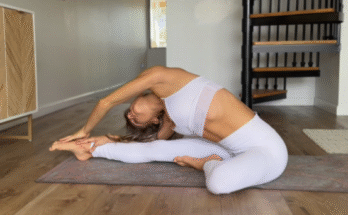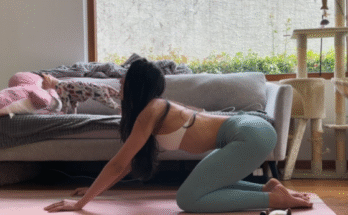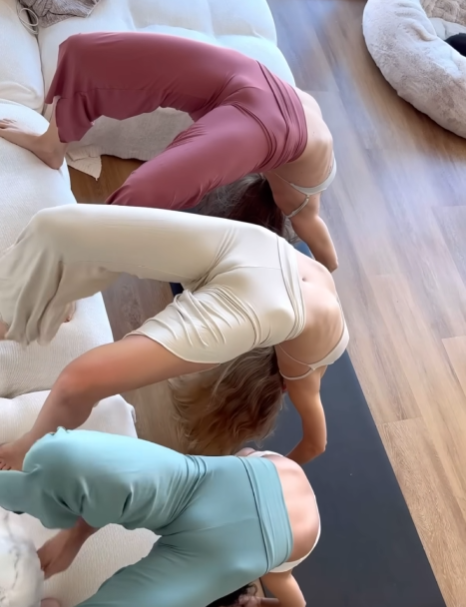
When it comes to improving flexibility, building resilience in the lower body, and reducing the risk of injury, two key muscle groups often need special attention: the hamstrings and the abductors. Many people spend long hours sitting, whether at desks, in cars, or on couches, which shortens and tightens these muscles. Over time, this tightness can lead to back pain, hip discomfort, or reduced range of motion. A dedicated yoga practice that focuses on deep stretches for the hamstrings and abductors not only releases tension but also enhances posture, balance, and overall athletic performance.
In this article, we’ll explore why these stretches are important, the anatomy of the muscles involved, and how to perform some effective yoga poses to target these areas.
Understanding the Hamstrings and Abductors
The hamstrings are a group of three muscles located at the back of your thighs: the biceps femoris, semitendinosus, and semimembranosus. They play a major role in bending the knee, extending the hip, and stabilizing the pelvis during walking and running. When hamstrings are tight, you may notice stiffness in your hips and lower back, and you might struggle to fully straighten your legs during stretches or yoga poses.
The abductors, on the other hand, are the muscles responsible for moving your legs away from the midline of your body. These include the gluteus medius, gluteus minimus, and tensor fasciae latae (TFL). They are essential for stabilizing the hips, especially during walking, climbing stairs, or balancing on one leg. Weak or tight abductors can contribute to knee pain, hip instability, or even issues in the lower back.
Together, these two muscle groups create the foundation of lower-body mobility. Working on them not only releases physical tightness but also enhances functional strength for daily life and athletic activities.

Why Focus on Deep Stretches?
Most people can benefit from light stretching, but deep stretching provides more profound results when done safely and mindfully. Deep hamstring and abductor stretches can:
- Improve Range of Motion: Allowing you to move more freely in sports, dance, and daily activities.
- Enhance Circulation: Stretching stimulates blood flow to the muscles, promoting recovery and healing.
- Prevent Injuries: Flexible hamstrings and abductors reduce strain on the knees and lower back.
- Balance Strength & Flexibility: Athletes, in particular, often overdevelop quadriceps or hip flexors while neglecting opposing muscles. Stretching restores balance.
- Support Posture: Tight hamstrings can pull the pelvis backward, leading to slouching. Loosening them allows for a more natural spine alignment.
The key is patience. Deep stretches should never feel like pain—rather, they should feel like an intense but manageable opening.
Preparing for Deep Stretches
Before diving into hamstring and abductor yoga stretches, it’s important to warm up. Cold muscles are less pliable and more prone to injury. Spend 5–10 minutes doing gentle movements such as:
- Cat-Cow stretches to mobilize the spine.
- Hip circles to awaken the hip joints.
- Light lunges to engage the legs.
- Gentle forward bends to start lengthening the hamstrings.
Once your body is warm, you can transition into deeper stretches.
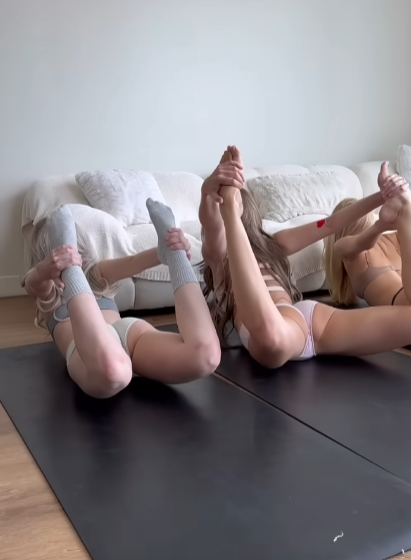
Yoga Poses for Hamstrings
1. Standing Forward Fold (Uttanasana)
A classic hamstring stretch, this pose brings awareness to the entire back body.
- Stand with feet hip-width apart.
- Exhale as you fold forward from the hips, keeping your spine long.
- Let your hands rest on the floor, shins, or blocks.
- Relax your head and neck.
- Hold for 30–60 seconds, breathing deeply.
To deepen: Micro-bend the knees slightly, then gradually straighten as the hamstrings open.
2. Pyramid Pose (Parsvottanasana)
This pose gives a more intense stretch to one hamstring at a time.
- Step one foot back about three feet, keeping hips square to the front.
- Inhale to lengthen the spine; exhale to fold over the front leg.
- Keep both legs strong and active.
- Hold for 5–10 breaths, then switch sides.
This pose also challenges balance, engaging the core along with the hamstrings.
3. Seated Forward Fold (Paschimottanasana)
A grounding pose that stretches both hamstrings deeply.
- Sit with legs extended forward.
- Flex the feet, pressing heels into the floor.
- Inhale to lengthen the spine; exhale to fold from the hips.
- Keep the chest reaching forward rather than rounding the back.
- Hold for up to 2 minutes.
Props such as a strap around the feet or a cushion under the hips can make this pose accessible for all levels.
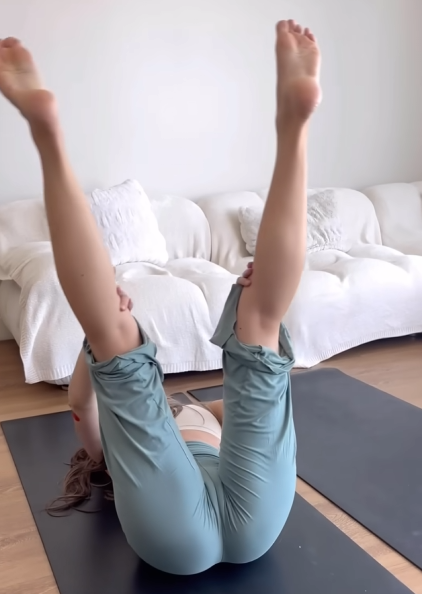
Yoga Poses for Abductors
1. Bound Angle Pose (Baddha Konasana)
A gentle but effective way to stretch the inner thighs.
- Sit with the soles of your feet together, knees bent out to the sides.
- Hold your feet or ankles with your hands.
- Let gravity gently press the knees downward.
- For a deeper stretch, hinge forward with a long spine.
This pose opens the hips and releases tension in the abductors.
2. Frog Pose (Mandukasana)
An intense abductor stretch that requires patience.
- Start on all fours, then slowly widen your knees apart while keeping the ankles in line with the knees.
- Lower down onto forearms or a block for support.
- Keep the hips in line with the knees and press them gently back.
- Hold for 30–60 seconds, breathing deeply.
This pose can be challenging but is one of the best ways to target the inner thighs.
3. Side Lunge (Skandasana)
A dynamic pose that stretches one leg’s adductors while engaging the other.
- Stand with feet wide apart.
- Bend one knee deeply, shifting your weight to that side while keeping the opposite leg straight.
- Flex the foot of the straight leg, toes pointing upward.
- You can keep hands on the floor for balance or bring them to heart center.
- Switch sides after several breaths.
This pose not only stretches the abductors but also builds leg strength.
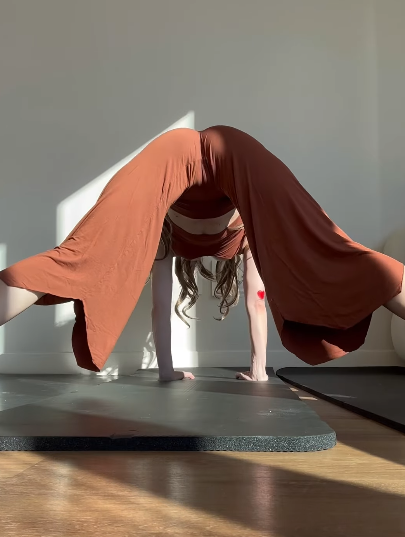
Combining Hamstring & Abductor Stretches
Some yoga poses naturally target both areas simultaneously.
- Wide-Legged Forward Fold (Prasarita Padottanasana): Stretches hamstrings and inner thighs together.
- Half Splits (Ardha Hanumanasana): Opens the hamstring of one leg while lightly engaging the abductors.
- Full Splits (Hanumanasana): The ultimate deep stretch requiring openness in both hamstrings and abductors.
When practicing these, focus on breath. Inhale to lengthen, exhale to release tension.
Safety Tips
- Listen to Your Body: Never push to the point of sharp pain.
- Use Props: Blocks, straps, or bolsters make deep stretches safer.
- Consistency Over Intensity: A little practice daily is more effective than occasional intense stretching.
- Engage Muscles While Stretching: Active stretching protects joints and deepens flexibility.
- Rest and Recover: Allow muscles time to adapt and grow more flexible.
The Mind-Body Connection
Yoga is more than just stretching the physical body. As you hold these deep hamstring and abductor stretches, notice the mental challenges—impatience, resistance, or discomfort. Breathing through these moments trains the mind to stay calm under stress. This practice of awareness can extend beyond the mat, helping you stay centered in daily life.
Conclusion
The Deep Hamstrings & Abductors Yoga Stretch is a powerful practice for anyone seeking improved flexibility, balance, and freedom of movement. By giving these often-overlooked muscles the attention they deserve, you not only prevent pain and injuries but also unlock new potential in your yoga practice, sports, and everyday life.
Commit to practicing these stretches regularly, listen to your body, and allow progress to unfold naturally. With time, your hamstrings will feel lighter, your hips will open, and you’ll experience the physical and mental benefits of deep stretching.

